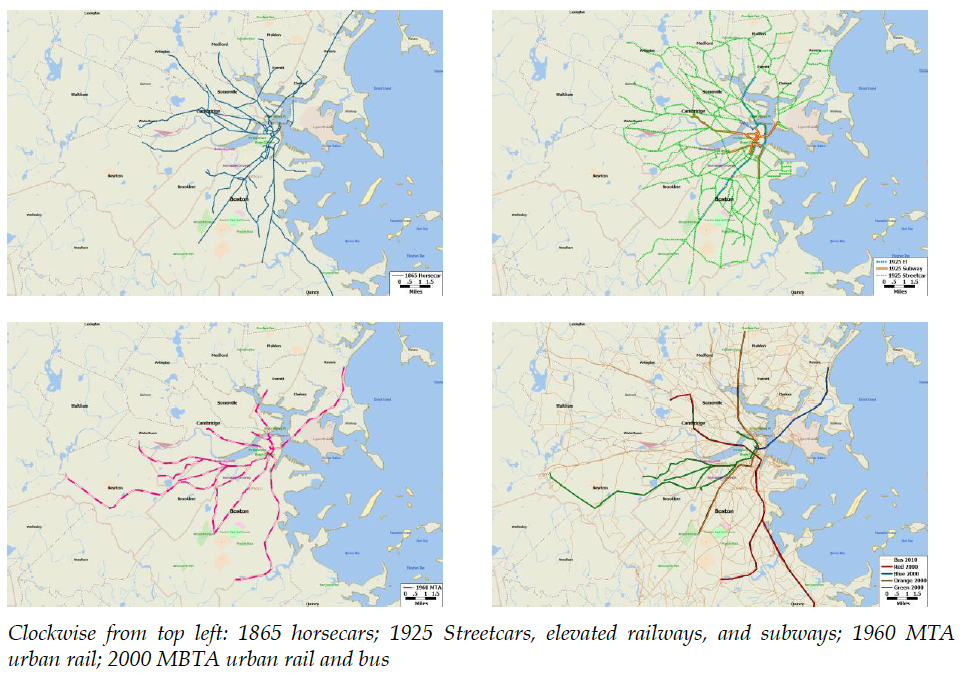| Title | Hysteresis and Urban Rail: The Effects of Past Urban Rail on Current Residential and Travel Choices |
| Publication Type | Journal Article |
| Year of Publication | 2015 |
| Authors | David Block-Schachter, Jinhua Zhao |
| Journal | European Journal of Transport and Infrastructure Research |
| Volume | 15 |
| Issue | 1 |
| Pagination | 78–91 |
| ISSN | 1567-7141 |
| Keywords | built environment, hysteresis, streetcars, urban development, urban rail |
| Abstract | Cities are endowed with and accumulate natural and constructed assets based on their unique histories, which in turn define the choice set of the present. But, common practice is that current behaviour can be described without reference to past circumstances. This work departs from that practice by examining the effects of historical urban rail on current residential location and travel behaviour, from the era of horsecars (1865) and streetcars (1925) to the present in Boston. It uses tract level data to explore the hysteretical effects of past access to rail—the extent to which the urban system retains the impacts of rail even when it no longer exists. |
| URL | http://www.tbm.tudelft.nl/fileadmin/Faculteit/TBM/Onderzoek/EJTIR/Back_issues/15.1/2015_01_05.pdf |
image:
